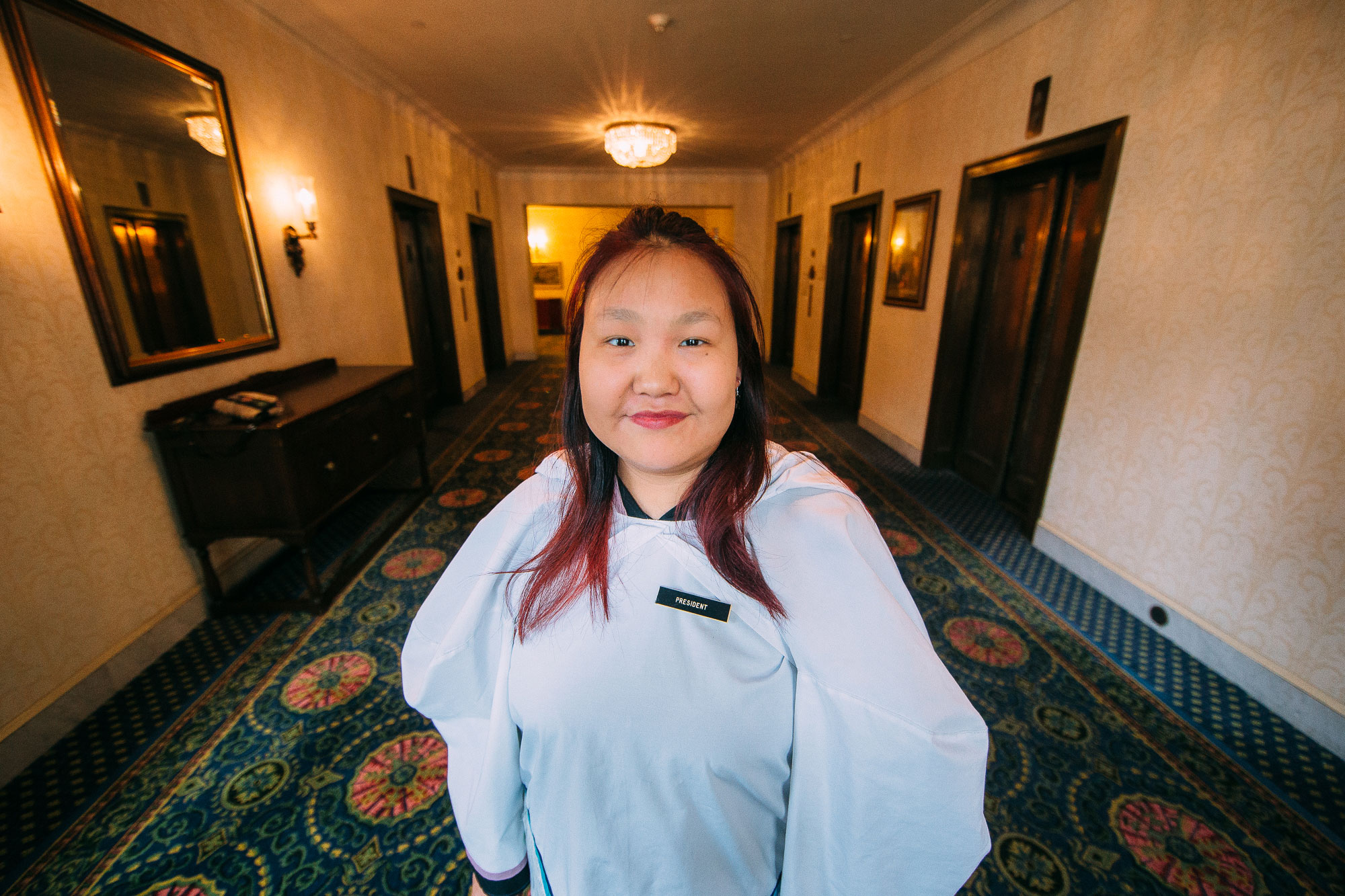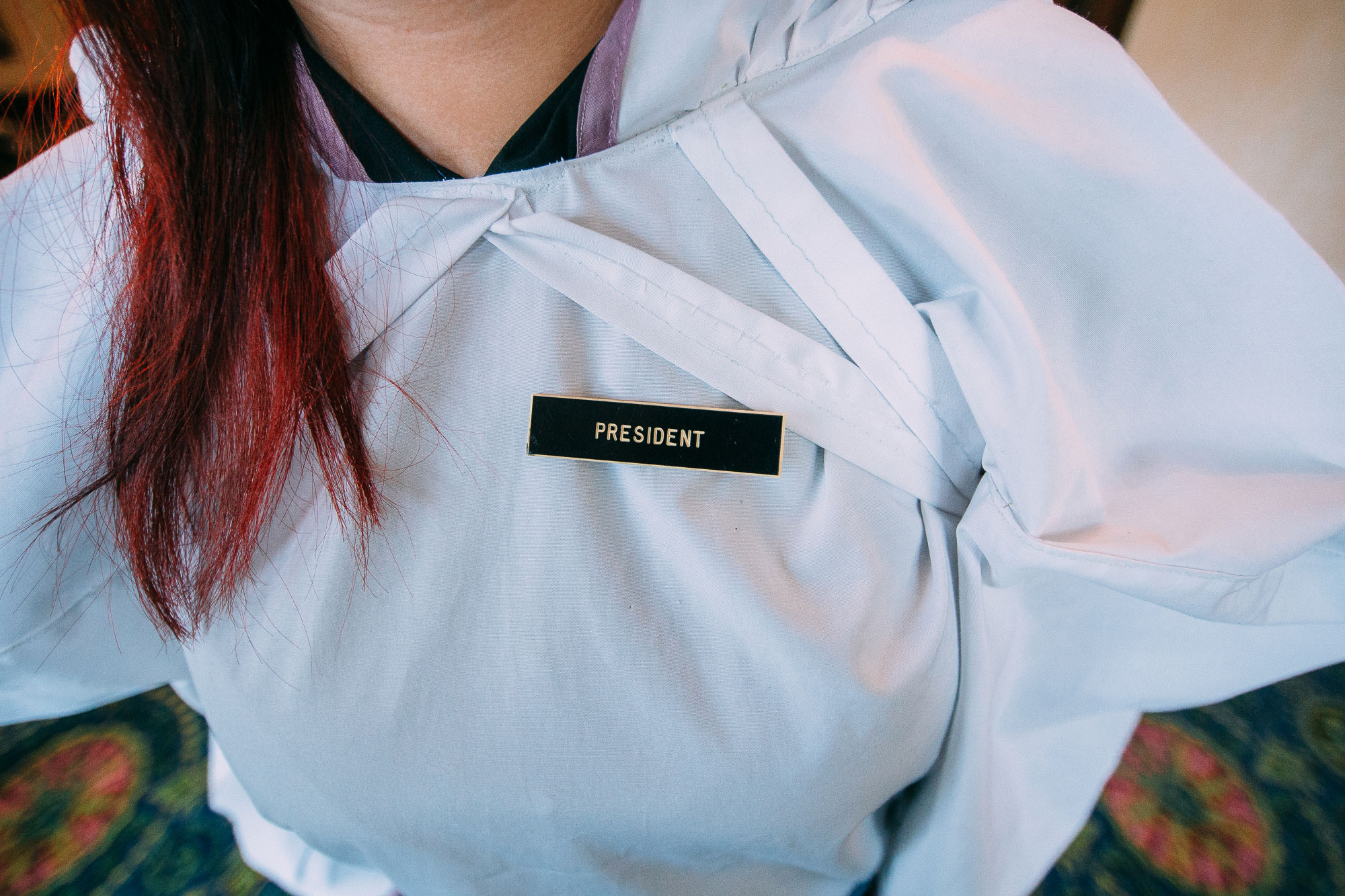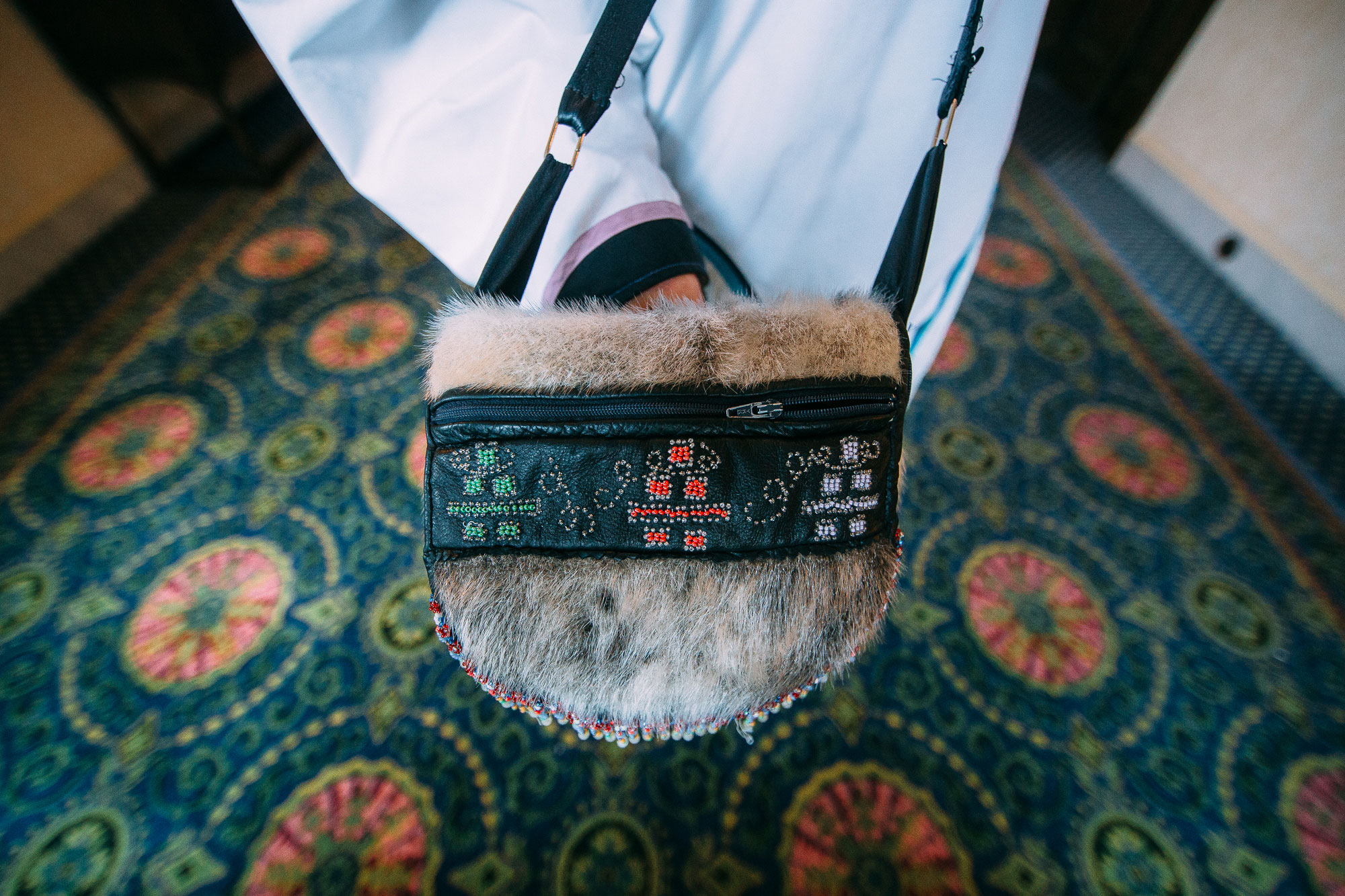I first met Ruth at Samara Canada’s EPC: IRL Forum in April. After we shared a cab and headed to different gates at the Edmonton airport—her bound for Arviat, Nunavut, and me bound for St. John’s, Newfoundland—I thought it would be a long time before our paths crossed again. But then she texted me at the end of June. “You’re going to be in Ottawa tomorrow?” she wrote. “I’m on my way there!”
I interviewed her in between meetings with the Governor General and other dignitaries, so if she sounds tired it’s because it was July 1 in Ottawa and she was running a full schedule.
“My name is Ruth Suwaksiork Kaviok. I’m from Arviat, Nunavut.”
”ᓱᕙᒃᓯᐅᖅᒥᑦ ᐊᑎᖃᖅᑐᖓ ᐊᕐᕕᐊᑦ ᓄᓇᕗᑦᒥᒃ ᓄᓇᓕᖃᕐᑐᖓ.”

I started out by asking her about her role with the National Inuit Youth Council but quickly realized I didn’t know much of anything about the territorial government or the history of Nunavut. I knew it had come into existence when I was young because I remembered maps changing in elementary school, but I had never learned why. Or perhaps more significantly, I had never been taught.
“Nunavut became Nunavut in 1999,” explained Ruth, “because our great leaders fought for us and made this agreement that the land is ours, we’re going to keep our culture and everything. So that’s when the government agreed all that. That was the Nunavut Land Claims Agreement.”
The Nunavut Land Claims Agreement was the largest Indigenous land claim settlement in Canadian history. It was signed in 1993 between the Tunngavik Federation of Nunavut, the Government of Canada and the Government of the Northwest Territories; and in 1999 Nunavut as an independent body became a reality. The Tunngavik Federation of Nunavut was founded in 1982 by regional associations of Inuit Tapiriit Kanatami (ITK) in order to negotiate the land claim. The ITK was in turn founded in 1971 with the rise of Indigenous political action following the 1969 White Paper.
Indigenous land claims were gaining momentum in Canadian federal courts in the 1970s, and in between 1975 and 2003 the Inuit negotiated four comprehensive land claim agreements with the federal government. Also within that period was the 1990 land dispute between a group of Mohawks and the town of Oka (read about it here); as well as the 1995 referendum on Québec sovereignty, which followed the rise of the Parti Québecois after the October Crisis (read about that here) and was boycotted by the ITK because it did not address Indigenous sovereignty and ongoing land claims.
All that is to say that as I researched the origins of Nunavut, I found firstly that I did not know much about the governmental structure of the territories, nor the colonization of the Arctic; and that other marginalized histories that I had already learned about were still connected in different ways to Inuit sovereignty and the politics of the mid- to late-20th century.
For Ruth, however, it was simple.
“We Inuit, we’ve been living in the land for many years when the world first started. Because of the land we survived, lived; that’s where our culture came from. The animals we hunt, that’s our food, their skins our clothing. We respect the land. Not only do we respect it, we appreciate it being there for us.”
For Ruth, the land was as much a part of her culture as language or hunting traditions. They were inherently connected. The traditional Inuit lamp, for example, the qulliq, burned with of whale blubber or seal oil. It was part of the land.
“The seal can be used for the traditional kamiks, for mitts, for jewellery, all kinds of things. Especially for food.”
The land was not, however, an objective space. It had seen centuries of hardship through colonization. “We both know that we went through a lot, my ancestors and I. We went through a lot and somehow we still managed to keep our feet on the ground and still feel hopeful and everything. Now look where we are.”
“We should all have pride in our identity. Just the word Inuit gives me chills sometimes.”
Ruth talked about a sense of duty to her ancestors, to continue advocating for the rights of Inuit people in recognition for how tireless and determined her ancestors had been. “I wouldn’t just let my ancestors that fought for us and kept us alive,” she paused. “Somehow I need to pay them back. By doing good.”
I asked if she had seen impacts of climate change in her lifetime. “Big time,” she said. “Every year there’s all these polar bears coming into town eating our country food because they have no seal because the seal aren’t there because the ice melted faster than it used to.”
There was these kinds of cause and effects, but Ruth also talked about the impact on the land as a whole.
“The land is one of our main symbols for our culture. The land. If that messes up, parts of our culture died. And it's because of the government, with all these pipelines, Meadowbanks, everything. They just need to respect our culture. I wish they could respect us and let us be and not do all these to affect us.”
Ruth is President of the National Inuit Youth Council (NIYC), which means she’s a leader for Inuit youth across Inuit Nunangat, the Arctic region including the northern Northwest Territories, Nunavut, northern Québec and northern Labrador.
“I get the opoprtunity to try to help Inuit youth face their problems, like identity, help connect with who they are, language, resiliency, coping skills.”
I asked if she ever thought about her young siblings when she was working with Inuit youth or government representatives.
“Every day,” she said. “I want their food to be nothing but amazing. I want the best for them, and that’s why I’m working so hard for them. I know my parents won’t be there for ever; it’s up to us older siblings to teach them, raise them, keep their identity alive.”

Ruth proudly wore a pin that said in block letters, ‘president.’ It wasn’t from ITK. It was from her father. “My dad was the president for all the firemen in all of NWT, when Nunavut was still NWT. He was 19, I think. And then, not long ago, he passed the pin on to me for my new role in NIYC.”
Ruth’s 19 now, and like her father and ancestors before her she is providing leadership for her people.
“It’s so cool how parents can motivate us so much that we become all these great people. Inspired people. I’m so thankful that my parents are like that. I wouldn’t be able to be who I am today if it wasn’t for them.”

Ruth is a leader in her community and for all of Canada. She values her closeness with her family and the resilience of her culture. She speaks Inuktitut, and talks about mental health, affordable nutrition, education reform and climate action.
I challenge you to ask yourself, what do you really know about the North? What do you know about the Committee for Original People’s Entitlement or the Meadowbank mine in Kivalliq? What do you know about food accessibility or youth mental health? It’s one thing to know that the Arctic ice is melting; it’s another to learn about the culture and people that are standing strong within it. If my conversations with Ruth are any example, there is a lot to learn.